2023 Report to the Community




Welcome to the 2023 Report to the Community highlighting the impact of Logan Health in our communities. Our contributions to the health and wellness of Montanans go well beyond the care we provide within the walls of our hospitals, clinics and facilities.
You’ll find Logan Health staff in our schools, offering on-site health care, mental health counseling, athletic training, grants to promote healthy classrooms, student leadership awards, career opportunities and more. Our teams are present at many community events, providing health education, bike helmet fittings, screenings, and other community health improvement and building activities. Programs like FoodRx, Save the Brain and Youth Development help encourage healthy habits, prevent injuries and inspire life-long healthy lifestyles and life skills. In our rural communities, our teams provide local care coordination and access to specialty care and emergency medical care through a dedicated rural EMS network.
As a not-for-profit health care system, it is our duty to be our community’s partner in health. I am immensely proud of the work the Logan Health team does to fulfill our mission and support the health and well-being of those we serve.
Craig Lambrecht, MD Logan Health President & CEO
1,294 Births
1,861 EMS Transports
28,261 Surgeries
Kalispell
510,504 Clinic Visits
45,976 ED Visits
871 Patients Served By A.L.E.R.T.
Logan Health service area covers 20 counties, nearly 50,000 square miles and a population of nearly 700,000.
Logan Health sponsored White Coat Ceremonies at both Flathead and Glacier High Schools, honoring students who successfully completed a certain amount of science credits.

$2.4 Billion
Total economic impact of Logan Health hospitals in the communities we serve.
150+
Number of community events Logan Health supports each year.
100+
Number of community organizations Logan Health supports each year through donations, sponsorships, gifts-in-kind and volunteers.
$2.5 Million Total property taxes paid.
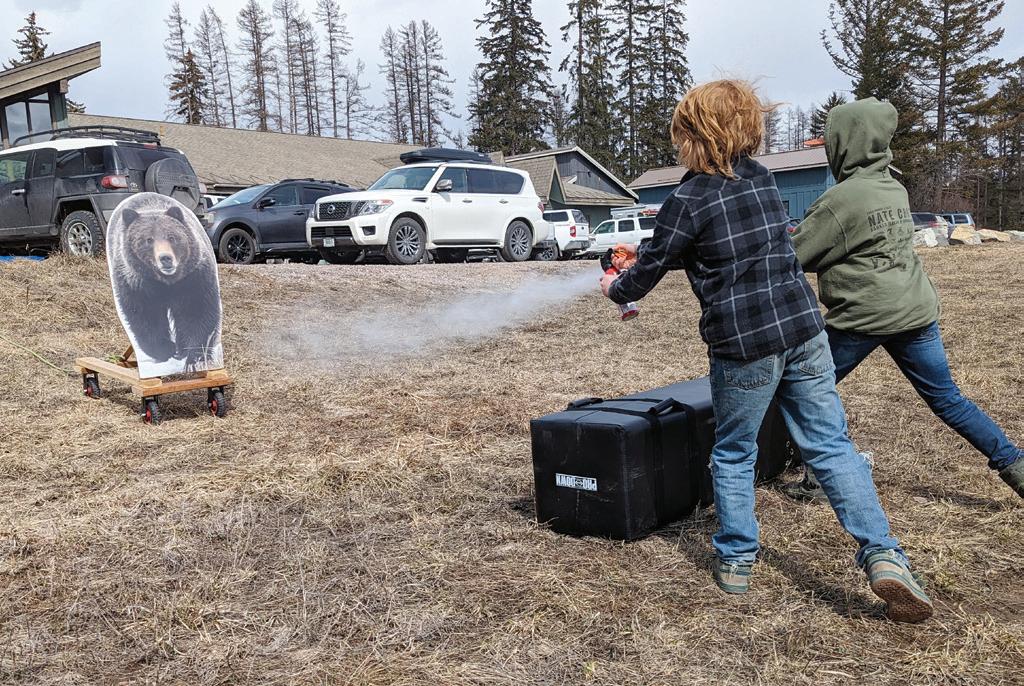
Logan Health maintains a rich tradition of giving back to the communities we serve. We are committed to promoting health, well-being and a caring spirit throughout our communities.

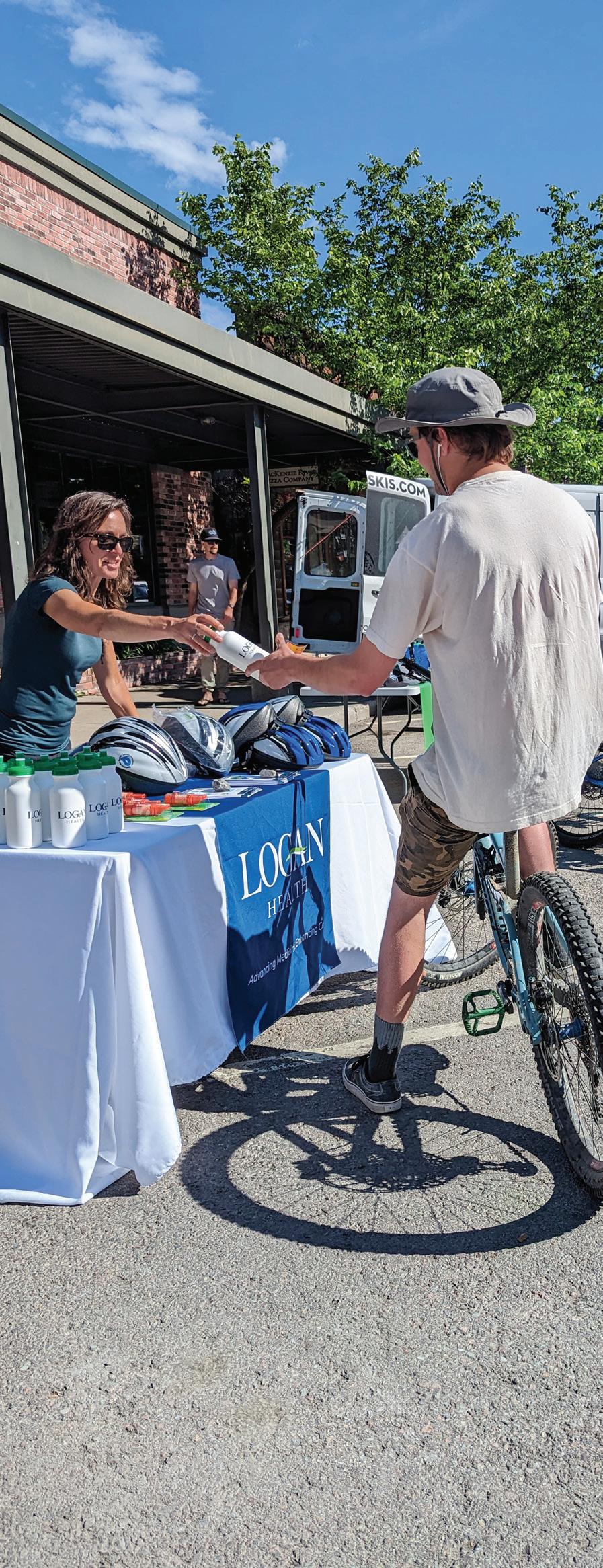
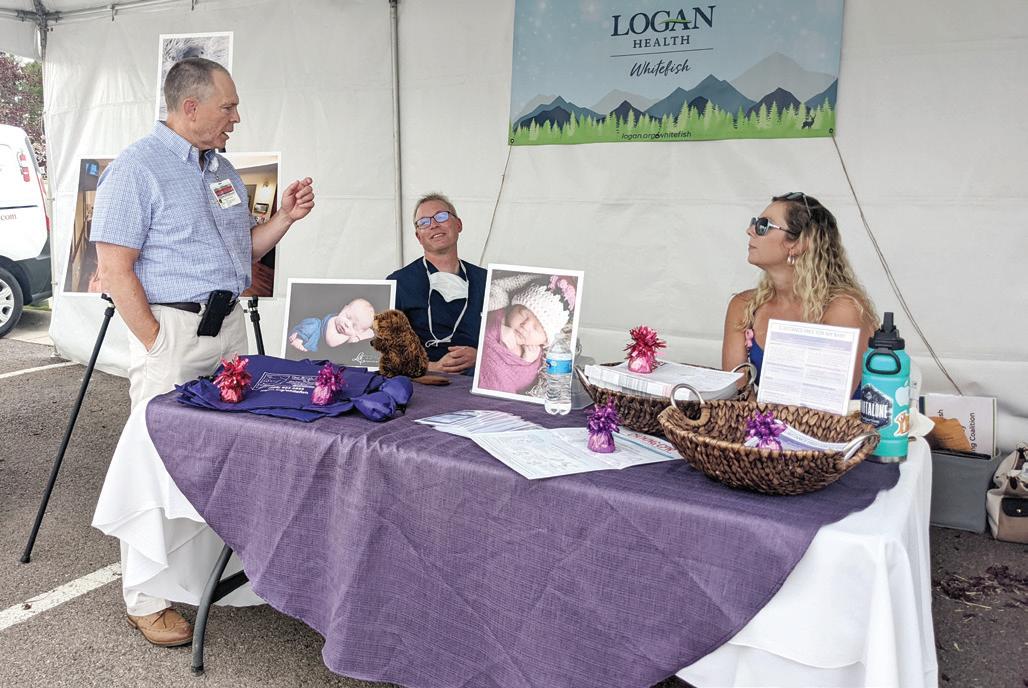
 Logan Health - ASSIST helps bring patients in need to and from their medical appointments.
Logan Health – Whitefish hosts “Living and Working in Bear Country” in partnership with Montana FWP.
Whitefish’s Birthing Center at the biennial Planetree Festival.
Logan Health hosts Conrad Whoop-Up Days annual Fun Run event.
Logan Health – Whitefish participates in the Bike to Work Block Party.
Logan Health - ASSIST helps bring patients in need to and from their medical appointments.
Logan Health – Whitefish hosts “Living and Working in Bear Country” in partnership with Montana FWP.
Whitefish’s Birthing Center at the biennial Planetree Festival.
Logan Health hosts Conrad Whoop-Up Days annual Fun Run event.
Logan Health – Whitefish participates in the Bike to Work Block Party.
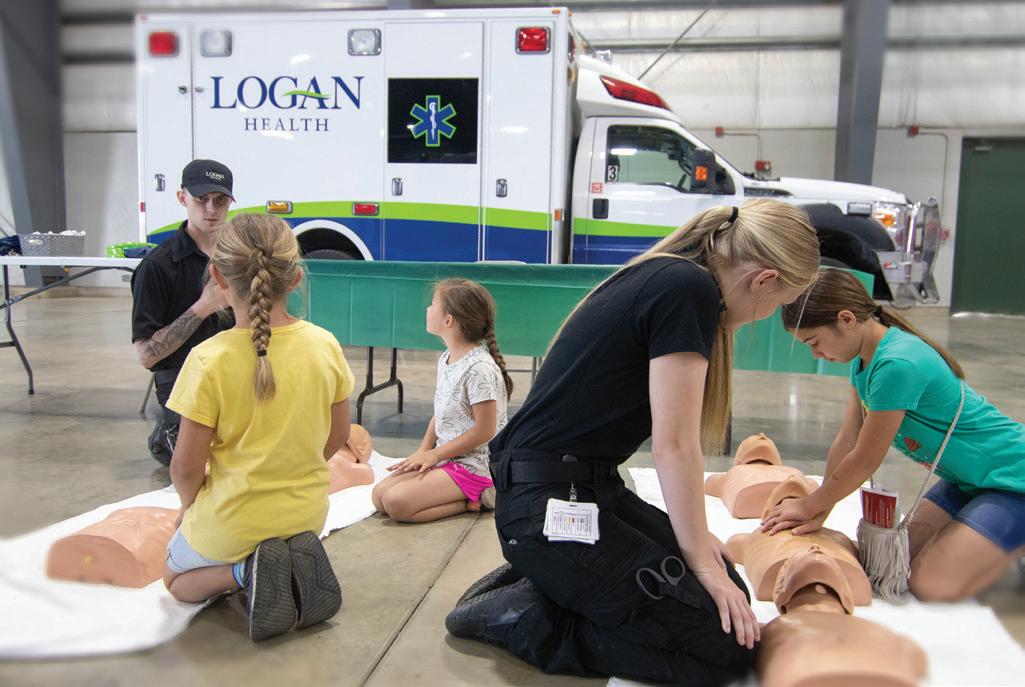

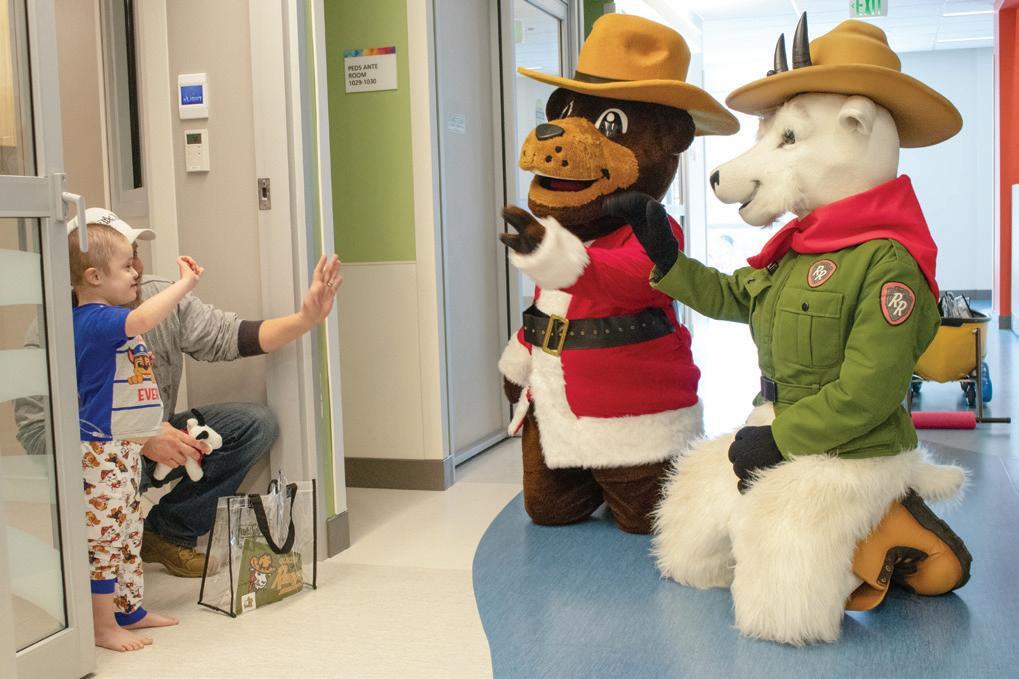
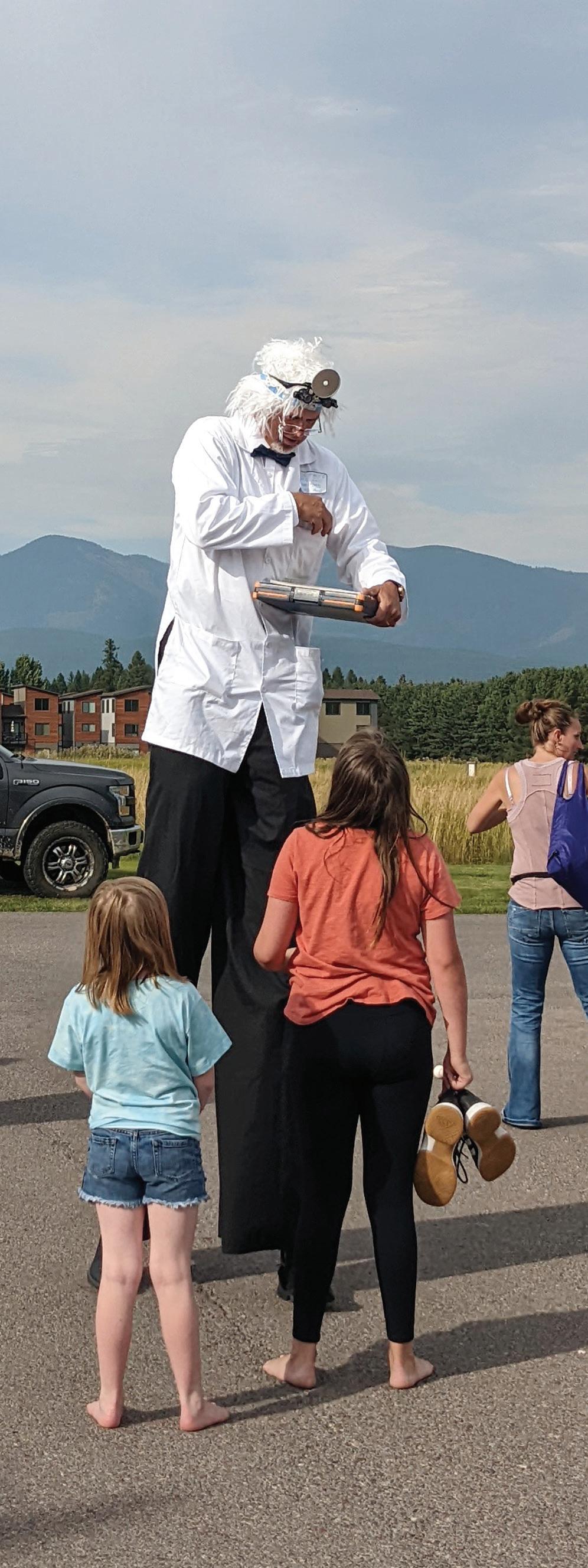
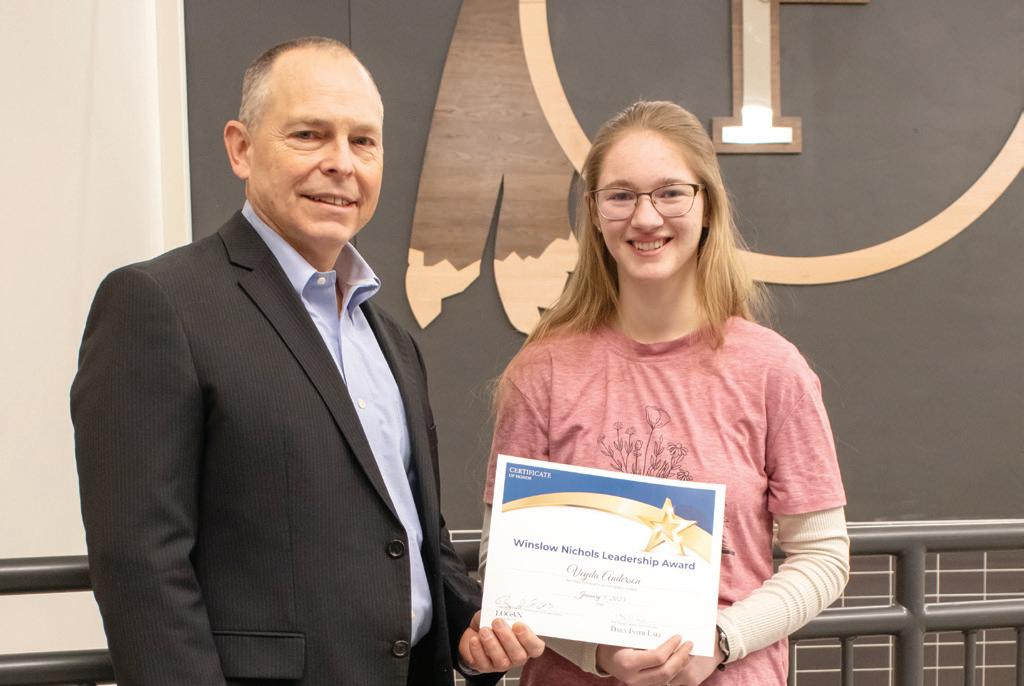

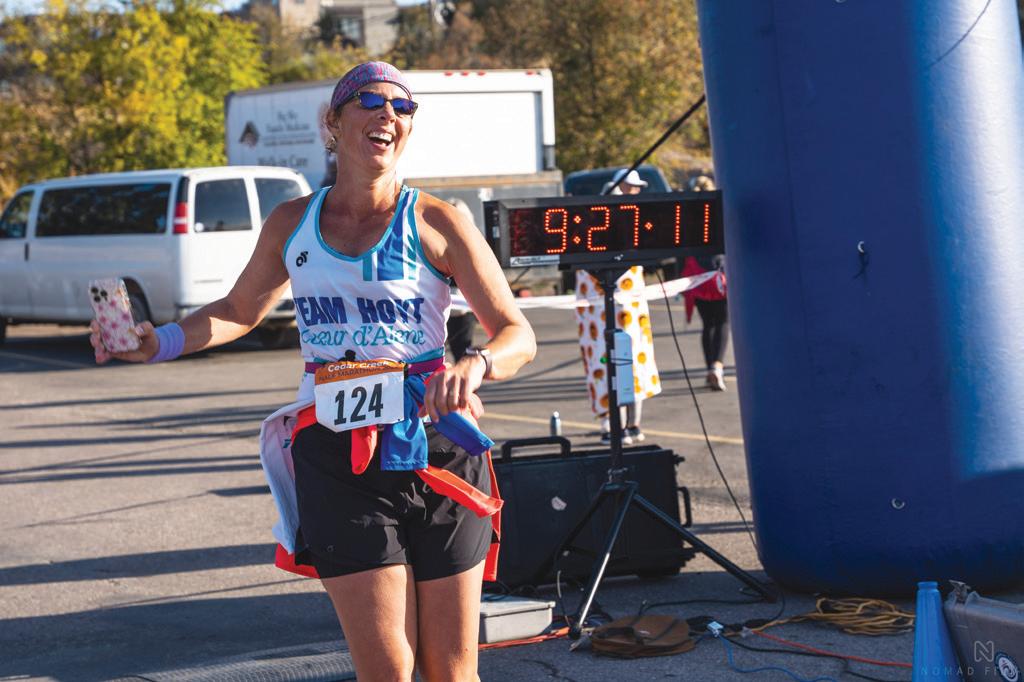 Logan Health EMS staff teach kids CPR basics at our annual Spring into Safety kids fair.
MSU nursing students fit nearly 1,000 helmets, courtesy of Flathead Electric, which were given away at Spring into Safety.
Glacier Range Rider mascots visit Logan Health Children’s.
Family fun at Logan Health – Whitefish’s biennial Planetree Festival for the community.
Since 2019, Logan Health has awarded over 40 high school students with the Winslow Nichols Leadership Award.
During the 2022-23 school year, Logan Health awarded Healthy Classrooms grants to educators across the Flathead Valley to help them encourage healthy habits.
In September 2022, Logan Health hosted the inaugural Cedar Creek Marathon in Columbia Falls.
Logan Health EMS staff teach kids CPR basics at our annual Spring into Safety kids fair.
MSU nursing students fit nearly 1,000 helmets, courtesy of Flathead Electric, which were given away at Spring into Safety.
Glacier Range Rider mascots visit Logan Health Children’s.
Family fun at Logan Health – Whitefish’s biennial Planetree Festival for the community.
Since 2019, Logan Health has awarded over 40 high school students with the Winslow Nichols Leadership Award.
During the 2022-23 school year, Logan Health awarded Healthy Classrooms grants to educators across the Flathead Valley to help them encourage healthy habits.
In September 2022, Logan Health hosted the inaugural Cedar Creek Marathon in Columbia Falls.
Imagine your child is at school, in the middle of the day — in Kalispell, or Whitefish, or Bigfork — and they have a medical or mental health issue. How can they get help? Who do they go to?
The answer, thanks in part to Logan Health, is there are many people your child could reach out to, from schoolbased clinicians to athletic trainers to in-school therapists, and they all work together to solve the issue, both immediate and long-term.
Logan Health’s school-based programs use teamwork to find out what care kids need and the best way to provide that care.
Logan Health currently has school-based clinics in five schools. Brittany Coburn, School-Based Health Center Program Director, explains: “Logan Health’s school-based health centers are similar to primary care offices — we provide preventive, acute, chronic, and mental health care. Our service is meant to complement the services your family doctor provides and help those who do not have a primary care provider. We do well child checks, physicals, blood draws, lab tests … whatever is needed.”
The clinics are embedded in the schools, so they’re available anytime during school hours, though they do require parental permission. The best part, Brittany says, is how caregivers are part of everyday school activities. “The clinics greatly increase kids’ ability to get health care. We work with the school nurses, with Logan Health counselors and school counselors, even with student family advocates. Being in the child’s life gives you the opportunity to see needs and offer a different level of care.”
Logan Health is also now expanding to be able to care for more students in rural communities with the recent acquisition, partly through philanthropic support, of two mobile school-based clinics. “These are essentially clinics on wheels,” Brittany says. “They are amazing, and they will take clinical care wherever the kids are.”
The Youth Development initiative takes an additional proactive approach to keeping students well: supporting healthy athletics and development. According to Kelly Malmin, Logan’s Youth Development Manager: “Youth are especially vulnerable to decreased flexibility and poor movement pattern development. We prepare our youth for functional movement through their lives, educate them on how to set goals and empower them to accomplish those goals while leading healthy lifestyles.”
Youth Development places strength and conditioning specialists in the schools, serving about 1,400 athletes throughout the valley. The trainers serve as the primary care and triage team for all sports injuries and illnesses that happen during games or training. They are on the sidelines, running youth strength programs at the Logan Health Performance Center and conducting sports physicals.
Logan also has a concussion advocacy program called Save the Brain. “Counselors, principals and any teachers or faculty who are interested take a course in concussion advocacy,” Kelly says. “Then, those people serve as a resource in each school. We also have a concussion clinic, where we determine what kind of help kids need and refer them that same day.”
Brittany Coburn, NP-C, performs a wellness check on a student at Columbia Falls High School. Brittany is a nurse practitioner and the director of Logan Health’s School-Based Health Center program and sees students at various different area schools.

Teamwork is critical. “Most of the time,” Kelly says, “the athletic trainers can provide treatment start to finish without referring anything out. They do thousands of treatments a month. But when the need arises for kids to be somewhere fast, they make the phone call to those providers to get them in as quick as possible, so that we can have a good continuity of care from start to finish of the injury.”
We are only now recognizing as a society how mental health can affect every aspect of life, and how critical it is to support the mental health of even young children — but Logan Health providers have been working in close collaboration with valley school districts since 2003. Leslie Nyman, Director of Behavioral Health, believes this longtime presence has reduced the stigma around mental health. “Because we’ve been treating mental health in the schools for 15 years, that’s really changed the culture, for both students and staff.”
Logan Health has 16 licensed therapists and 8 mental health technicians based in local schools every day. “We continue to tailor our treatment based on the school’s needs and the student’s needs,” Leslie says. “The commitment of our partnership with the schools is very strong. We also work closely with the school-based medical clinics, with other medical providers, and with the athletic trainers, making sure anyone who needs help receives it.”
Logan Health staff also work to actively teach students about health, providing hands-on opportunities to learn from our medical staff and encouraging local kids to consider careers in health care.

Donivee Randall-Jones, Logan’s Academic Programs Coordinator, is an academic liaison between Logan Health and area schools. Donivee schedules tours, coordinated with a class’s curriculum, and school visits by providers. “A popular event last year,” Donivee says, “was bringing our respiratory therapy team to schools and using pig lungs to demonstrate
how the respiratory system works. We talk about health systems in an interesting way and expose kids to different careers. We try to be mindful of gaps where more workers are needed. This year we talked about careers in radiology.”
Donivee also recently organized a Hyped on Healthcare day-long event, where interested high school students came to the hospital to explore the many health care career opportunities. She arranges job shadowing, works with high school clubs, and has a strong collaborative relationship with the nursing program at Flathead Valley Community College. “On any given day,” she says, “there’s hundreds of undergrad students somewhere at Logan Health. We’re sharing our knowledge and our passion for health care, with the next generation.”
Logan Health’s school-based programs allow us to meet the need where it happens, providing immediate holistic care and support to the children of our community.Youth Development gives young athletes the tools needed to reach their performance goals and stay healthy doing so.



Logan Health is committed to inspiring future generations of health care professionals at schools in all of our communities. The support of schools not only benefits students and their own individual futures, but also the future health of our communities. As an advocate for community service, we recognize our role as a leader in the health field to inspire the next generation of health care professionals.
This past year, Logan Health awarded numerous scholarships to high school students and teachers across the state. Healthier Classrooms scholarships were donated to teachers to help fund projects that promote health in their schools, and Healthier Futures scholarships were awarded to high school seniors with aspirations in the health fields.
In addition, Logan Health awarded 11 new Winslow Nichols Leadership Awards to students with high achievements in both their classrooms and their communities. Each student received $250 to a school club/ activity of their choice. Logan Health also sponsored White Coat Ceremonies at both Flathead and Glacier High Schools, honoring students who successfully completed a certain amount of science credits.
There were also numerous in-school activities and career fairs that Logan Health providers, techs and nurses participated in throughout the year. From robotic surgery to emergency medical services and respiratory therapy, many teams presented to students to help demonstrate and inform on the different careers in health care. In October 2022, Logan Health hosted their first ever Hyped on Healthcare event, inviting students from five area high schools for a day of learning about different careers in health care.
The 19th century adage stressed the importance of diet in health. Although it seemed like an easy solution, for some healthy food is out of reach. Barriers such as a low income, transportation challenges, or simply inexperience with cooking healthy foods may keep people from eating the balanced diet they need to improve their health. Logan Health’s FoodRx program helps patients gain access to locally-sourced produce providing a path to better health.
The health care providers at Logan Health Primary Care clinics and SchoolBased Health Centers screen patients for low food security by responding to two questions:
1. Have you ever worried that food will run out before you had the money buy more?
2. Has the food you bought ever not lasted and you didn’t have enough money to get more?
If a patient with a chronic health condition such as diabetes, prediabetes, depression or anxiety answers affirmatively, they qualify for Logan Health’s FoodRx program.
Once a patient is identified by their primary care provider, one of Logan Health’s care coordinators helps the patient to get enrolled in the FoodRx program. The clinic obtains a baseline of health indicators such as weight and blood pressure. Once enrolled, the care coordinator connects the patient to Logan Heath’s partner, Land to Hand MT.
Since the program’s inception in 2018, Land to Hand MT has collaborated with Logan Health clinics and served as the “FARMacist,” connecting program participants to fresh produce grown by farmers in the Flathead Valley. Land to Hand MT reaches out to program participants and makes arrangements for food box pick-up, delivery or a farmer’s market visit to pick out their food with assistance from a Land to Hand MT team member.
Included in their boxes of healthy foods are the recipes, instructions and ingredients needed to prepare two week’s worth of meals. Land to Hand MT will also check-in during the week to answer any questions and provide assistance with integrating the produce and other healthy ingredients into their meals.
While the primary goal is to increase consumption of vegetables and improve health, the program also aims to increase a participant’s comfort level using fruits and vegetables while increasing their exposure to a variety of produce. As the participants become more knowledgeable, their confidence in using these foods also increases.
After a participant has completed a year in the program they will return to their Logan Health provider to reassess weight, blood pressure, and blood sugar levels. The metrics have shown an overall improvement in nearly every participant.
Currently, there are 27 participants in the Columbia Falls and Kalispell areas, which includes up to 100 family members sharing healthy meals. Logan Health recently expanded the FoodRx program to patients in Eureka with future plans for the Hi-Line. The program is supported by the Foundations of Logan Health and Logan Health – Whitefish.
Mark Logsdon loads his vehicle at Land to Hand MT to deliver food prescriptions to Eureka.

With adventure in every corner, the Flathead Valley is a hotbed for thrill seekers of all kinds. Every year, adventurists such as climbers, whitewater rafters, mountain bikers, skiers and snowboarders take to the mountains, lakes, rivers and trails to feel the adrenaline rush that they crave. But with every adventure comes great risk. For 70-year-old Larry Bruce of Whitefish, an avid climber, biker and all around outdoorsman, the risk of adventure is what may have saved his life.
Back in September 2021, Larry and his wife Molly, were biking the trails of Spencer Mountain in Whitefish, a trail they have biked countless times during their 33 years in the Valley. But on that day, fate had a different plan for the Bruces. “I don’t remember why, but I ended up getting off course,” recalls Larry. The unfamiliar terrain resulted in a nasty wipeout for Larry. “I was tomahawked off my bike and ended up knocking myself out,” says Larry. “When I came to, I had signs of amnesia, but I seemed to be for the most part alright.”

After assessing himself, Larry determined that no medical attention was necessary. But Molly was not taking any chances. At the time, Larry had
been on blood thinners due to issues with atrial flutter. Molly determined that a head injury with those conditions was dangerous and told him to get to the emergency room.
Larry paid a visit to the emergency room at Logan Health - Whitefish and was looked over by an emergency physician. She and her team did a thorough evaluation and, while they determined that his head was fine, they found some concerning lesions on his pancreas and a nodule on his lung. Larry’s care team determined that the best move would be to have a biopsy done on both to make sure they weren’t anything more concerning.
While the lesions on the pancreas checked out fine with the gastroenterologists at Logan Health Digestive Center, the lung nodule was determined to be cancerous. The good news, however, was that the cancer was caught very early and could be addressed with minimally invasive surgery and therefore, he would be able to recover fully. “It’s hard to believe that a mountain bike crash could have potentially saved my life,” continues Larry. “But if that thing would have metastasized, who knows what the outcome would have been.”
Larry was referred to Luis Alberton, MD, thoracic surgeon at Logan Health Medical Center. Dr. Alberton, one of the region’s most refined minimally invasive surgeons, assured Larry that robotic surgery would be the least invasive approach and would likely have a shorter recovery time. An avid outdoorsman himself, Dr. Alberton understood the importance of a short recovery time for a person like Larry. Minimally invasive robotic surgery expedites a patient’s recovery time by avoiding the chest wall trauma that would’ve been necessary for a more traditional thoracotomy.
In January 2022, three months after the bike accident, Dr. Alberton performed a robotic lobectomy on Larry in which he removed about a quarter of his lung. Just two weeks after the procedure, Larry was able to resume some activities. And by the following summer, he was back biking Spencer Mountain. “I’m glad that I had somebody like Dr. Alberton taking care of me,” says Larry. “Thoracic surgery is a nice thing to have available in our community.”
Today, Larry is cancer free and continues to improve. Although his aerobic threshold has been compromised with the removal of part of his lung, he continues to push the boundaries that have been set for him. While a fluke accident led to the discovery of Larry’s cancer, it’s important to have regular screening — such as lung cancer screening — at the appropriate ages.
Larry was able to get back to doing what he loves thanks largely in part to Logan Health’s system approach. With a flagship medical center in Kalispell complete with numerous specialty clinics and providers, Logan Health’s critical access hospital in Larry’s hometown of Whitefish was able to connect him with the proper specialists he needed to see in a timely manner.

According to a 2021 assessment by the Montana Department of Health and Human Services, Montana’s rural Emergency Medical Services (EMS) system — like many others across the country — is in crisis: “Without action, it will continue to deteriorate, and calls for help will not be answered.”

Key challenges, according to the report, are staff shortages, declining revenue, and a lack of coordination and trained direction. Ryan Pitts, then Logan Health’s Chief Nursing Officer, and Craig Lambrecht, MD, President and CEO, started discussing these issues several years ago and saw a potential solution for Montana: creating an organized, centralized regional EMS system.
There were pieces of the puzzle already in place. The A.L.E.R.T program has had a transport helicopter since the 1970s, the first rural health hospitalbased air ambulance in the nation. As the hospital began growing in the early 2000s, they contracted out for a fixed-wing aircraft to do additional medical transports, and then in 2011 brought that in-house, with their own plane, pilots, and FAA certificates. But, Ryan said, that wasn’t enough: “We had aircraft here, ambulances in Conrad and Cut Bank … we had satellites, but no hub. We needed to step up – whether it’s by a helicopter, a fixedwing plane, or ground ambulance, from the very basic types of care up through advanced levels of critical care. How are we going to build this system, put it all together, provide the resources and stabilize the area, and provide training and education?”
Ryan was appointed as Emergency Medical Services Executive Director, and started digging in. “My job,” said Ryan, “is to centralize and figure out where it makes sense to put resources, how to hire, how to interact with local
communities and volunteers. We are leveraging crews and all the different equipment, aircraft to ground ambulances to dispatchers to EMS, to nurses, paramedics, and critical care paramedics, to ensure patients are taken as quickly as possible to where they need to be. It used to be that every time a complication happened, there could be hours of delay with patients waiting. Now we can redirect a crew here, provide transport there — we can even predict some of the complications and avoid them. That efficiency, sending the right team to the right place, even lowers cost for everyone and reduces risk.”
The system also helps Logan Health see where gaps are and fill those needs. One of the gaps was for a skilled team that could handle the delicate transport of newborns and children. In 2019, Logan Health introduced a specialized OB/NICU transport team made up of four highly skilled nurses equipped with specialized isolettes to transport sick or injured newborns and children from outlying facilities to wherever needed. Just one phone call activates the team, which transports patients by helicopter, airplane or ambulance any time, day or night. This is the only team like it in Montana. According to Kenny Lard, Clinical Nurse Director, the team has handled 153 neonatal and pediatric critical care transports in the last year. When not handling transports, the team also works inside the hospitals, delivering babies and caring for newborns and children. “Having this team available,” Kenny said, “and being able to rely on the EMS system to organize everything, makes access to care so much better for Montanans.”
Ryan and his team are also looking to improve rural EMS care with training, and recruitment. “We’re there in the communities to help train, educate and provide support to local volunteers and paid responders. For example, there’s a small EMS agency in Chester, Montana. They’re trying to provide transports, do their own training, trying to take care of their community. We come in and offer to do some of their training, to handle long-distance transfers for their patients who were waiting for hours. Just call us, and
we’ll send out a crew to help. Their relief is palpable, everywhere we go. We also give emergency medical responder classes in high schools. We show students there’s a career path towards EMS, towards being on a critical-care flight crew. We need them, and we’ll help them get there.”
Sometimes people question why Logan Health transport teams respond even for non-Logan patients. Ryan has an easy answer for this. “We’re going to treat you as a community and a family. And if you have a need, we’re going to come out. We believe that health care is a community asset, and Logan Health is willing to put in the necessary resources for this EMS system.”

Tressa, an Information Services manager for Logan Health, and her husband, Chance, had already gone through almost 10 years of infertility treatments. Their first child, Madeline, had been a high-risk pregnancy and was born at 36 weeks, breech, by caesarian section. To complicate issues, the Kellers live in Shelby, Montana, an isolated town on the HiLine — hours away from the nearest hospital that can handle a high-risk pregnancy. With her second pregnancy, Tressa was facing gestational diabetes, a subchorionic hemorrhage, anemia, and preeclampsia, with extremely high blood pressure. Any one of those complications could land her and her baby in an emergency health crisis, fast.
Fortunately, Tressa deeply trusted her obstetrician, Thomas deHoop, MD, of Logan Health. He’d been with her for all of those years of care.
“Over the years, our relationship has developed because he was there for everything,” Tressa said. “He’s been honest through it all, and so supportive.”
Though based in Kalispell, Dr. deHoop travels to Shelby once a month to hold office hours and provide regular check-ups for his patients. With Tressa, he did more than that: he coordinated and managed a care team, so she could receive top-notch care while staying in Shelby as much as possible.
Juan Martinez-Poyer, MD, a maternal-fetal specialist based in Kalispell, was brought in during the first pregnancy and continued to consult for the second. He traveled to the Hi-Line regularly then, too — at the beginning, Tressa needed to see him every week. The Logan Health team in Shelby, including the lab, radiology and nursing, helped to coordinate
and perform and run tests. Tressa spent some time in the clinic in Shelby, some in Cut Bank, some in Kalispell and some in virtual health visits.
Critically, all these providers worked together and shared information, so Tressa never had to worry about it. She knew everything was taken care of. “We wanted to stay in Montana for our care instead of going out of state,” Tressa said. “And we’re so happy we did. There’s just something about Montanans taking care of Montanans.”
Tressa ended up living in Kalispell for the last few weeks of her pregnancy, so Dr. deHoop could constantly monitor her. She delivered her daughter Raelynn, known as Pepper, in June 2022, both of them healthy.
“Even after the birth,” Tressa said, “I was so lucky to continue to receive excellent care. I actually had a stitch that popped out, and Stephen Milheim, MD, a Logan Health surgeon who travels to Shelby from Kalispell, was able to take care of it, right there and then. I didn’t have to travel anywhere else.”
Through Logan Health’s rural outreach programs and caring, top-quality providers, the best care is wherever you are. “It’s community-focused health care,” Tressa said. “You’re not just a medical record number. You’re part of a team.”
Tressa Keller knew going into her second pregnancy that it would be high-risk.
 Tressa with her husband, Chance, and daughters, Madeline and Raelynn.
Tressa with her husband, Chance, and daughters, Madeline and Raelynn.
On February 16, 2023, Montana Highway Patrol (MHP) Trooper Lewis Johnson was critically injured while pursuing a suspect in the Eureka area. The suspect’s vehicle had become stuck in the snow and Lewis approached him with his weapon drawn in an attempt to apprehend him. The suspect regained control of the vehicle and barrelled right into the responding officer. “It was coming right at me, I didn’t have time to get out of the way,” he recalls. “I don’t remember actually being under the vehicle, but I remember laying in the snow trying to breathe after it happened.” Lewis had been completely run over and was now fighting for his life. His left shoulder and all but two of his ribs were broken, his right lung, liver, and stomach were all in bad shape, and he had a severe spinal injury. Deputy Clint Heintz of the Lincoln County Sheriff’s Office, the other officer involved in the chase, was able to tend to Lewis and began the rescue operation.

Logan Health’s A.L.E.R.T. helicopter was dispatched while a local ambulance picked up Lewis and brought him to the Eureka Ranger Station. Shortly after, the A.L.E.R.T. team arrived on scene. “We did our initial assessment and found that he was in fairly rough shape,” recalled Leon DeJong, RN, the responding A.L.E.R.T. flight nurse. “We noticed his lower extremities weren’t working properly, and his breathing was diminished on one side.” Lewis was quickly loaded up into the helicopter and administered pain medication. “I’ve never seen anybody in that rough of shape with such a positive attitude,” added Reece Roat, the A.L.E.R.T. flight paramedic on the scene. “He was very focused on what we were doing and what we were saying.” Lewis was then flown to Logan Health Medical Center (LHMC) in Kalispell for emergency treatment.
Upon arriving at LHMC, Lewis went directly into emergency surgery. The team had been notified of the Trooper’s impending arrival and were ready for him when he touched down. “While getting a heads up of incoming patients is relatively standard, there was additional urgency behind this, given the patient’s status as a trooper,” says Bethany Weiler, MD, critical care physician and the nocturnal intensivist on call at the time. “There
is a long and deep relationship between law enforcement and health care workers, and a sense of duty to each other in times of crisis, and we especially wanted to ensure that our staff was ready and equipped to deliver excellent care to Trooper Johnson.”
Following the initial evaluations, multiple specialists were called in to tend to Lewis and the various injuries he had. The neuro team quickly brought him in for surgery to stabilize his back for his spinal injury. Later orthopedics addressed a leg fracture they located, and the trauma team dealt with the rib fractures, collapsed lung and other organ damage. After surgery, Lewis was transferred to the Intensive Care Unit (ICU), where another multidisciplinary team assembled to discuss their management plan.
Meanwhile, Trooper Kate Johnson, Lewis’ wife and a fellow MHP trooper, had heard about the incident and was on-site to be with her husband by the time the ambulance had picked him up. After he was airlifted away, she was driven down to Kalispell to be with him.
Marsha Lyles, a surgical services lead at LHMC, was working when she heard about the incident with Lewis and knew she needed to be there to meet Kate in the Emergency Department. A few months prior, Marsha’s husband, a lieutenant with the Montana Motor Carrier Services, had a serious heart emergency and Kate was there in the same emergency department to help support her. Now it was her turn to return the favor.
“Marsha met us at the door when we got there,” Kate recalls. “She stayed with us the entire time. Every medical decision there was, she helped explain it and let us know that we had options. I trusted her and knew we were getting the best possible care.” Marsha’s shift ended at 5:30 p.m. that day, but she knew she needed to be there to support Kate through the whole process. She estimates that she didn’t get home until about 1 a.m. that next morning. But to her, this was just her way of supporting local law enforcement. “We’re a community who backs the blue, it’s what we do,” she
says. Marsha was back early the next morning to continue caring for Kate and all of the other supporters.
After three days on a ventilator, Lewis woke up and was able to speak with his family and supporters. By that time, it had become apparent that he had no feeling below his waist. Doctors had informed him that his T7 vertebrae had been dislocated, and it wasn’t clear on whether or not he’d be able to walk again. However, his care team was prepared to help him through this. “With a new traumatic injury like that, your whole world is turned upside down and you need distractions to take your mind off of it,” says B.J. Corpron, RN, one of the intensive care nurses who helped care for Lewis. B.J. connected with Lewis over their mutual love of the outdoors. “It’s important to find personal connections to patients to relate to them,” he continues. “We were both born and raised in Montana, so we were just a couple of Montana boys talking about hunting and fishing. I told him we’re going to get back out there and get back to doing the things we love.”
“Everybody was great, “ says Lewis. “From the doctors and nurses to the people cleaning the room, they all were incredible. I never felt like they were just putting in time. It really felt like they cared.”
Lewis remained at Logan Health through February 28, until he was transferred to Craig Hospital in Denver, Colorado. A procession of law enforcement vehicles guided him from LHMC to the A.L.E.R.T. plane at Glacier Park International Airport. At the request of the Johnson family, Reece Roat and Leon DeJong, the flight nurse and flight medic from the rescue, were the nurse and medic for the flight to Colorado. As of Summer 2023, Trooper Johnson continues to progress on his rehabilitation.
Logan Health Care Centers in Conrad and Shelby were each awarded the MountainPacific 2022 Nursing Home Achievement of Excellence Awards at this year’s Montana Health Care Association’s Annual Conference.
Logan Health Medical Center was named one of 78 hospitals nationally to achieve meritorious outcomes for surgical patient care by the American College of Surgeons National Surgical Quality Improvement Program.
Logan Health Medical Center was one of just 54 hospitals nationwide to earn The Lown Institute’s Honor Roll status for social responsibility and ranked #1 in the State of Montana.
Logan Health Medical Center was awarded Women’s Choice Awards in Cancer Care, Comprehensive Breast Centers, Heart Care, Patient Experience, Women’s Services and Best Mammogram Imaging Center.
Logan Health Medical Center was awarded eight American Heart Association achievement awards for their implementation of quality improvement measures that ensure cardiovascular patients receive efficient and coordinated care.
Logan Health Medical Center was awarded the 2022 Patient Experience Award from Healthgrades.
Logan Health - Whitefish was named a Top 20 Critical Access Hospital by the Chartis Center for Rural Health.
Logan Health has been recognized as a winner of the 2022 Community of the Year
Population Health Pioneer Awards, presented by Caravan Health, part of Signify Health, for demonstrating exemplary work while serving their patients, community, and the healthcare industry
Logan Health Medical Center was awarded the achievement award for organ donation from LifeCenter Northwest.
Logan Health School-Based Program won the Montana Hospital Association’s Community Partnership Award in 2022.
Logan Health – Chester is a 25-bed 501(c)(3), non-profit community
Critical Access Hospital located in Chester, Montana. The hospital serves Liberty County and surrounding communities providing emergency care, acute care, laboratory services, imaging services, rehabilitation, skilled swing bed services, long term care, mobile MRI, mammography and dexa, endoscopy and more.
Opened in the summer of 2019, the 190,000 square foot Logan Health Children’s facility was created to provide local access to high quality pediatric specialty care close to home, including the largest group of fellowshiptrained pediatric specialists in the state. Highly skilled, highly trained medical staff, nurses, therapists, social workers and other health care professionals deliver pediatric care in an environment appropriate for children. With 30 inpatient beds including a Neonatal Intensive Care Unit, a Pediatric Intensive Care Unit and an acute care pediatric unit as well as dedicated spaces for family caregivers, Logan Health Children’s has become a pediatric health care destination, saving the lives and improving the health of children across Montana.

Logan Health – Conrad is a 20-bed 501(c)(3), non-profit community

Critical Access Hospital located in Conrad, Montana. The hospital serves Pondera County and surrounding communities providing emergency care, acute care, laboratory services, imaging services, rehabilitation, skilled swing bed services, sleep studies, mobile MRI, mammography, endoscopy and more.
Logan Health – Cut Bank is a 20-bed 501(c)(3), non-profit community

Critical Access Hospital located in Cut Bank, Montana. The hospital serves Glacier County and surrounding communities providing emergency care, acute care, behavioral health, laboratory services, imaging services, rehabilitation, skilled swing bed, mobile MRI, mammo and dexa, GI scopes, nursing outpatient services and more.

Logan Health Medical Center, the flagship hospital of Logan Health, is a 150-bed acute care regional referral center, offering a full spectrum of health care services one might only expect of a large metropolitan area. Logan Health Medical Center is especially well known for its programs in cardiovascular care, oncology, neuroscience and spine care, orthopedics, women’s health, surgical care, pediatrics and behavioral health provided by more than 500 physicians and 4,000 employees. Steeped in a rich and rewarding history, Logan Health Medical Center believes in advancing medicine and enhancing care for all the communities and people we serve.


Logan Health – Shelby is a 21-bed 501(c)(3), non-profit community Critical Access Hospital located in Shelby, Montana. The hospital serves Toole County and surrounding communities providing emergency care, acute care, skilled swing bed services, outpatient services, outpatient surgeries, laboratory services, imaging services, MRI, mobile mammography, rehabilitation, sleep studies and more.

Logan Health – Whitefish is a 501(c)(3), non-profit community Critical Access Hospital located in scenic Whitefish, Montana. Logan Health – Whitefish was the first hospital in Montana to be affiliated with Planetree International, a non-profit organization that provides education and information in a collaborative community of health care organizations, facilitating efforts to create person-centered care in healing environments. The hospital and its outreach clinics serve Flathead and Lincoln counties.
logan.org